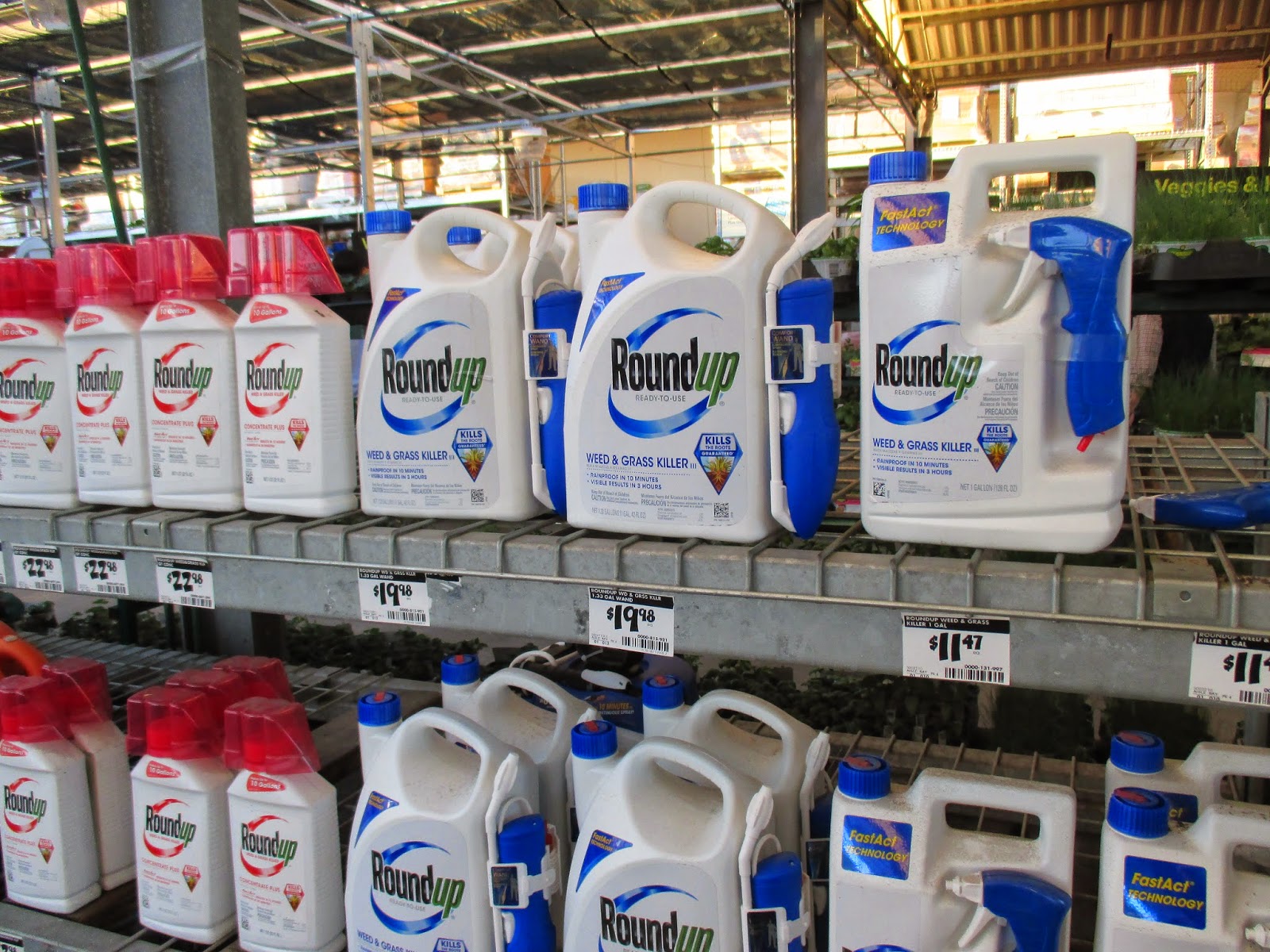.
Traveling in the USA, I was shocked to discover these enormous shelves of Roundup in a garden center. Banned in Canada and Europe, these poisonous products are freely applied in gardens instead of pulling weeds out... No one seems to care. I even witnessed people in flip-flops, bare legs and without any protection to spray their gardens with Roundup while their children were playing next to them. UNBELIEVABLE!
By 2025 half the newborn will be Autistic! That is the conclusion of Stephanie Seneff, Phd., a professor and senior research scientists at the Massachusetts Institute of Technology. She warned at a recent conference that: “At today’s rate, by 2025, one in two children will be autistic.”
.
She noted that the side effects of autism closely mimic those of glyphosate toxicity, and presented data showing a remarkably consistent correlation between the use of Roundup on crops (and the creation of Roundup-ready GMO crop seeds) with rising rates of autism.
"Children with autism have biomarkers indicative of excessive glyphosate, including zinc and iron deficiency, low serum sulfate, seizures, and mitochondrial disorder."
Read the whole article here.
.
It gets even worse:
Glyphosate Herbicide Found in Breast Milk of American Mothers
In the first ever testing on glyphosate herbicide in the breast milk of American women, Moms Across America and Sustainable Pulse have found ‘high’ levels in 3 out of the 10 samples tested. The shocking results point to glyphosate levels building up in women’s bodies over a period of time, which has until now been refuted by both global regulatory authorities and the biotech industry.
The levels found in the breast milk testing of 76 ug/l to 166 ug/l are 760 to 1600 times higher than the European Drinking Water Directive allows for individual pesticides. They are however less than the 700 ug/l maximum contaminant level (MCL) for glyphosate in the U.S., which was decided upon by the U.S. Environmental Protection Agency (EPA) based on the now seemingly FALSE premise that glyphosate was not bio-accumulative.
Read more.Glyphosate-containing herbicides are the top-selling herbicides in the world and are sold under trademarks such as Monsanto’s ‘Roundup’. Monsanto’s sales of Roundup jumped 73 percent to $371 million in 2013 because of its increasing use of genetically engineered crops (GE Crops).
.
Read more.Glyphosate-containing herbicides are the top-selling herbicides in the world and are sold under trademarks such as Monsanto’s ‘Roundup’. Monsanto’s sales of Roundup jumped 73 percent to $371 million in 2013 because of its increasing use of genetically engineered crops (GE Crops).
.
.
Glyphosate is Not the Only Culprit According to the National Pesticide Information Center fact sheet, glyphosate is not included in compounds tested for by the Food and Drug Administration's Pesticide Residue Monitoring Program, nor in the United States Department of Agriculture's Pesticide Data Program. However, a field test showed that lettuce, carrots, and barley contained glyphosate residues up to one year after the soil was treated with 3.71 lb of glyphosate per acre (Wikipedia).
.
Weed Resistance:
Over the 16-year period since genetically modified crops were introduced, "herbicide-resistant crop technology has led to a 239-million-kilogram (527-million-pound) increase in herbicide use in the United States between 1996 and 2011. Resistance evolves after a weed population has been subjected to intense selection pressure in the form of repeated use of a single herbicide.Weeds resistant to the herbicide have been called 'superweeds'.
Glyphosate is the active ingredient in herbicide formulations containing it. However, in addition to glyphosate salts, commercial formulations of glyphosate contain additives such as surfactants which vary in nature and concentration. Laboratory toxicology studies have suggested that other ingredients in combination with glyphosate may have greater toxicity than glyphosate alone.
.
Inert Ingredients Amplified the Toxic Effect on Human Cells
Until now, most health studies have focused on the safety of glyphosate, rather than the mixture of ingredients found in Roundup. But in the new study, scientists found that Roundup’s inert ingredients amplified the toxic effect on human cells—even at concentrations much more diluted than those used on farms and lawns.
One specific inert ingredient, polyethoxylated tallowamine, or POEA, was more deadly to human embryonic, placental and umbilical cord cells than the herbicide itself – a finding the researchers call “astonishing.”
“This clearly confirms that the [inert ingredients] in Roundup formulations are not inert,” wrote the study authors from France’s University of Caen. “Moreover, the proprietary mixtures available on the market could cause cell damage and even death [at the] residual levels” found on Roundup-treated crops, such as soybeans, alfalfa and corn, or lawns and gardens. Read more in this article by Scientific American.


